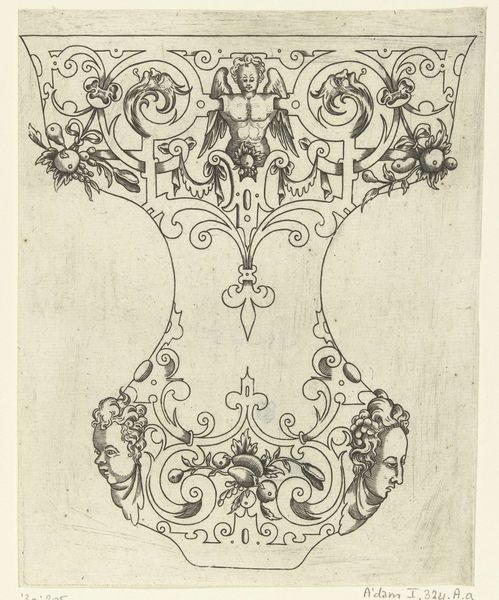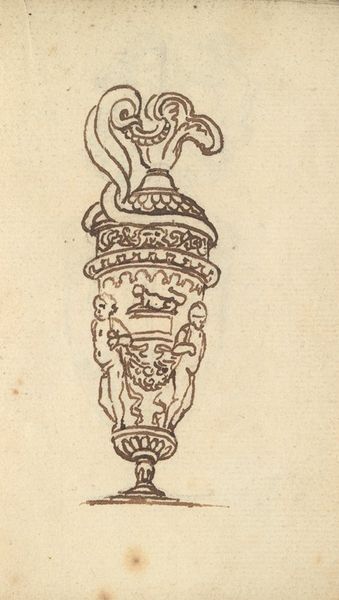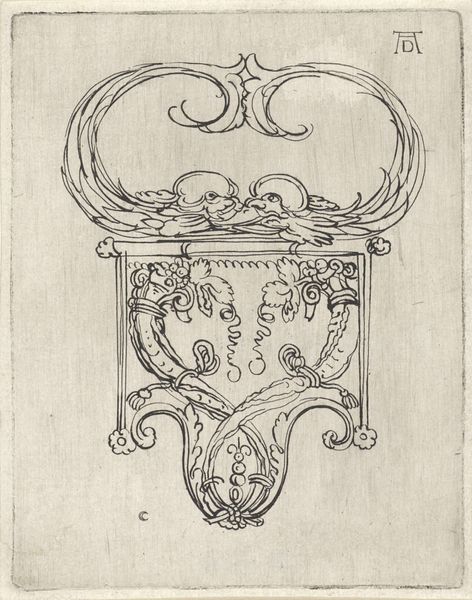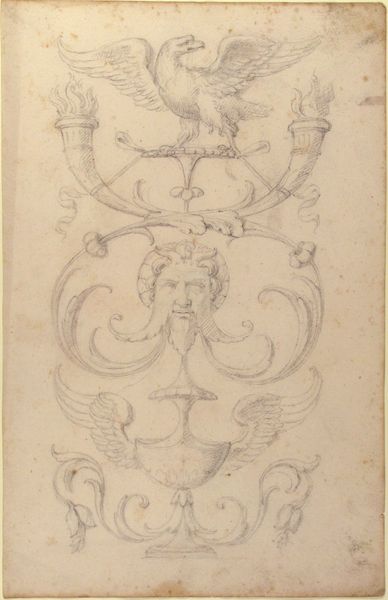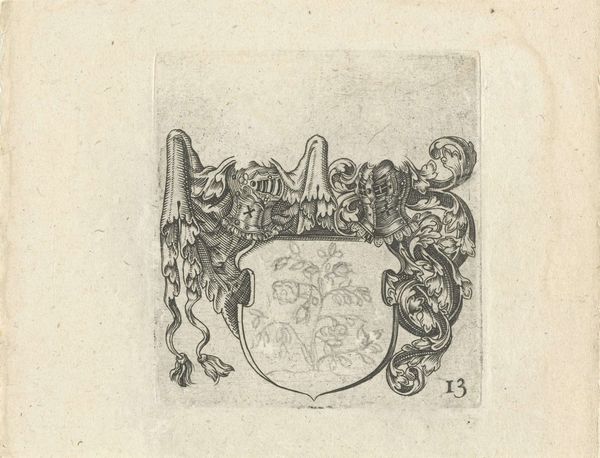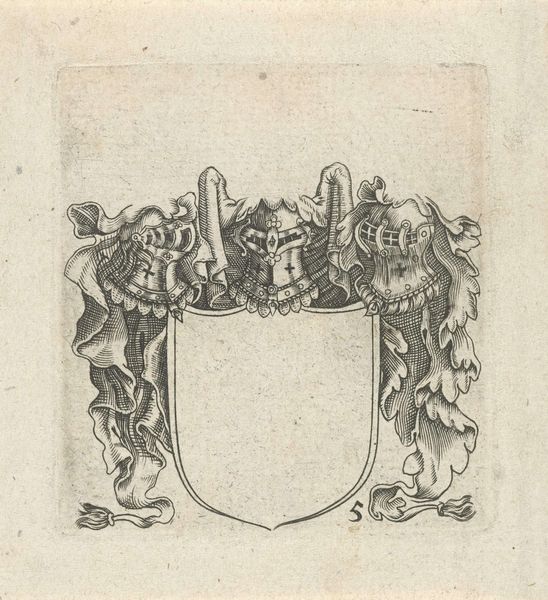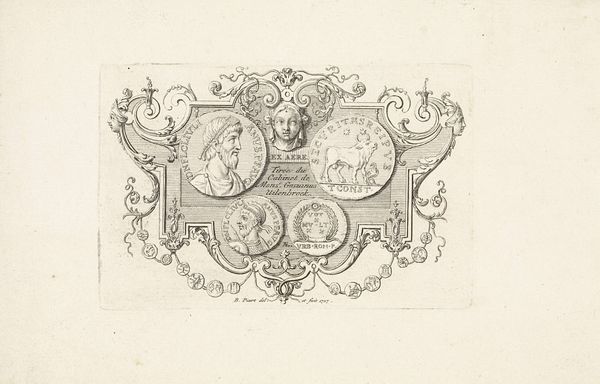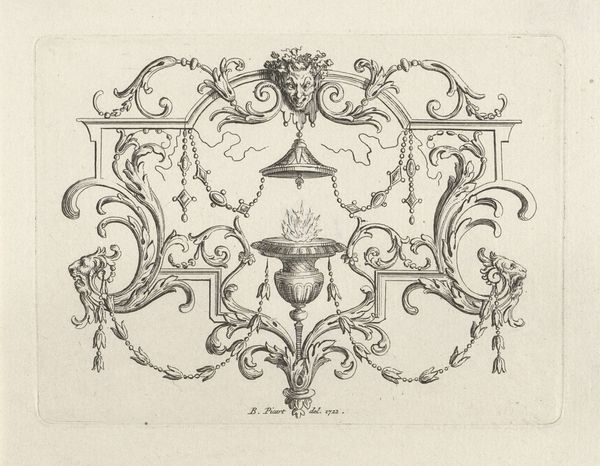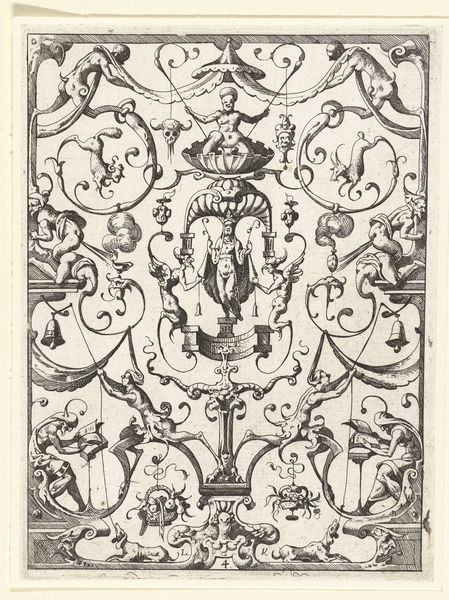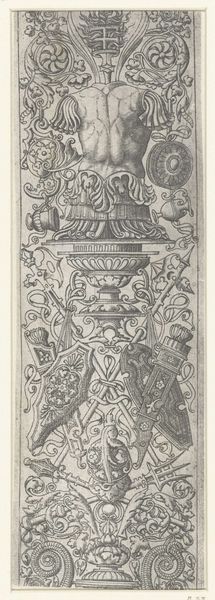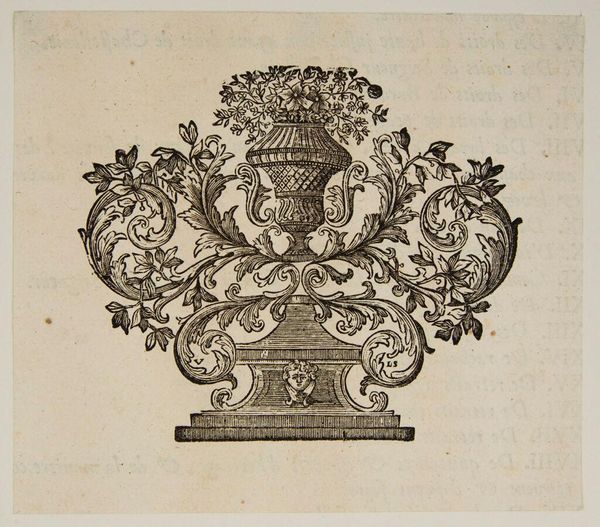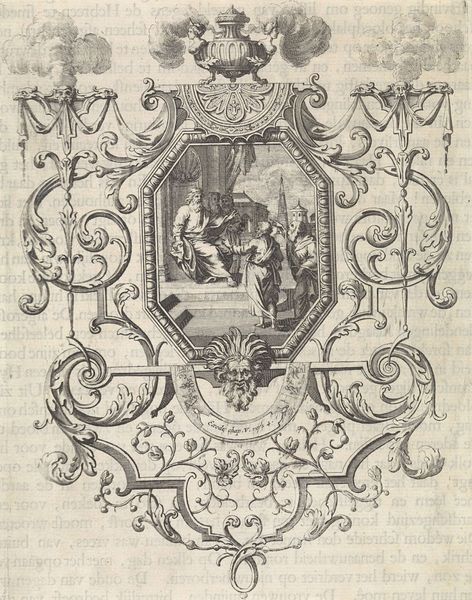
drawing, ink, pen
#
drawing
#
pen drawing
#
pen sketch
#
form
#
11_renaissance
#
ink
#
line
#
pen
Dimensions: height 303 mm, width 124 mm
Copyright: Rijks Museum: Open Domain
Curator: Here at the Rijksmuseum, we have this pen and ink drawing from somewhere between 1500 and 1600; it’s titled "Dubbele Bokaal" and its creator is unknown to us. Editor: It’s haunting, almost gothic. That thin line work and the density of ornamentation – it feels like looking at a cathedral in negative space. And, wow, those faces… Curator: The sketch captures the intricate details of the envisioned chalice, every flourish of the artist's pen suggesting the sparkle of silver or gold, perhaps? It is a beautiful, idealized design. Editor: Speaking of design, look at the prominent central face – almost Medusa-like – flanked by fierce bird-like creatures. Is it simply decorative or meant as a symbol of power, domination, patriarchy even? We’ve got these aggressive motifs surrounding the drinking vessel, which suggests consumption, ritual, display… Curator: It is really something how a simple drawing, perhaps meant as a mere proposal, becomes imbued with meaning over time. One can trace endless implications, perhaps beyond its intended meaning? Editor: Exactly. Take that base for instance. We see figural supports... tiny people trapped, it seems, holding up this object. Who were they, and what labor is unseen, quite literally? These vessels of luxury came with a price. Curator: Do you think such designs spoke to that exploitation? Or perhaps they were meant to signal the refinement that distanced a powerful patron from the horrors enacted by their reign? I can't quite put my finger on that artist's intention. Editor: Intent is tricky, isn't it? But looking closely, the sketch exposes those layers of wealth and power—even five centuries removed. This drawing offers much to contemplate beyond its pretty form. Curator: I suppose, ultimately, that is what I cherish about drawings such as these: they remind me how even something seemingly straightforward can lead to unexpected journeys. Editor: Right. Art invites conversation, disruption even. And the questions this chalice provokes—questions of power, privilege, and the echoes of history—resonates even now, doesn’t it?
Comments
No comments
Be the first to comment and join the conversation on the ultimate creative platform.
